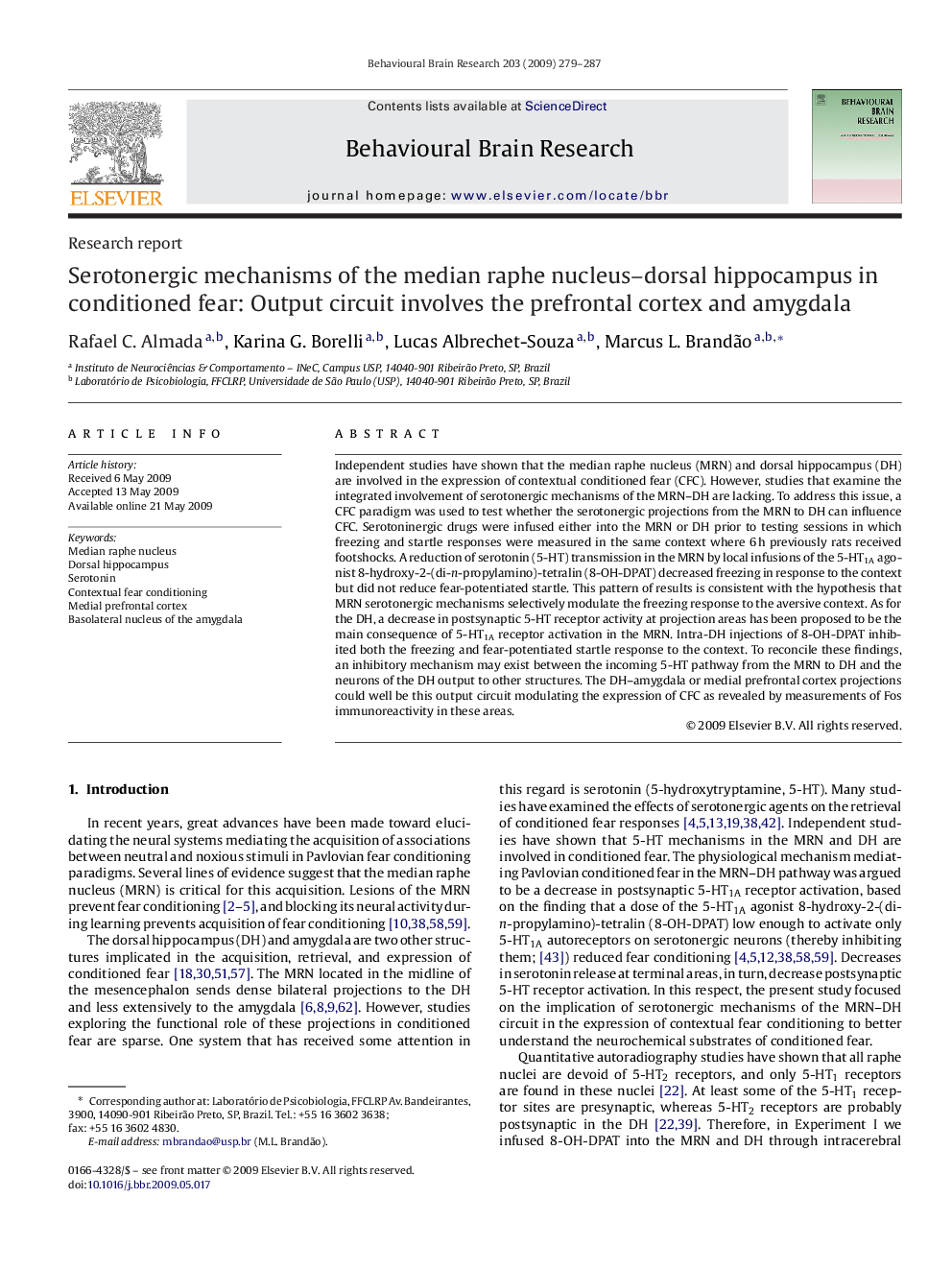| Article ID | Journal | Published Year | Pages | File Type |
|---|---|---|---|---|
| 4314668 | Behavioural Brain Research | 2009 | 9 Pages |
Independent studies have shown that the median raphe nucleus (MRN) and dorsal hippocampus (DH) are involved in the expression of contextual conditioned fear (CFC). However, studies that examine the integrated involvement of serotonergic mechanisms of the MRN–DH are lacking. To address this issue, a CFC paradigm was used to test whether the serotonergic projections from the MRN to DH can influence CFC. Serotoninergic drugs were infused either into the MRN or DH prior to testing sessions in which freezing and startle responses were measured in the same context where 6 h previously rats received footshocks. A reduction of serotonin (5-HT) transmission in the MRN by local infusions of the 5-HT1A agonist 8-hydroxy-2-(di-n-propylamino)-tetralin (8-OH-DPAT) decreased freezing in response to the context but did not reduce fear-potentiated startle. This pattern of results is consistent with the hypothesis that MRN serotonergic mechanisms selectively modulate the freezing response to the aversive context. As for the DH, a decrease in postsynaptic 5-HT receptor activity at projection areas has been proposed to be the main consequence of 5-HT1A receptor activation in the MRN. Intra-DH injections of 8-OH-DPAT inhibited both the freezing and fear-potentiated startle response to the context. To reconcile these findings, an inhibitory mechanism may exist between the incoming 5-HT pathway from the MRN to DH and the neurons of the DH output to other structures. The DH–amygdala or medial prefrontal cortex projections could well be this output circuit modulating the expression of CFC as revealed by measurements of Fos immunoreactivity in these areas.
